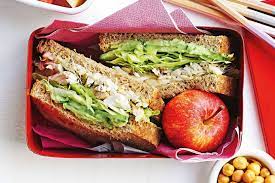
Ka Ora, Ka Ako | Healthy School Lunches Programme.

The Ka Ora, Ka Ako | Healthy School Lunches programme aims to reduce food insecurity by providing access to a nutritious lunch in school every day. Around a million lunches are provided each week. By August 2022, over 63 million lunches have been delivered in 950 schools and kura to over 220,000 learners.
Every child at TFPS receives a free nutritional lunch everyday. We are very grateful to Forest View High School who provide our tamariki with yummy, healthy lunches.
Ka Ora, Ka Ako aims to reduce food insecurity amongst New Zealand children by providing access to a nutritious lunch every day. Research indicates that reducing food insecurity:
- improves wellbeing
- supports child development and learning
- improves learners’ levels of concentration, behaviour and school achievement
- reduces financial hardship amongst families
- addresses barriers to children’s participation in education and promotes attendance at school
- boosts learners’ overall health.
We want to see improved engagement, learning and behaviour, fewer children having little or nothing to eat for lunch, and reduced financial hardship amongst the families of participating students.
Not every student in a school may need a free lunch, so why is lunch provided on a universal basis in schools?
Providing lunch on a universal basis minimises any stigma associated with food insecurity – everyone receives a lunch and there is no need to single out those who need it more than others. Programmes that target on the basis of individual need also require a process to confirm eligibility. This can add costs and complexity and discourage eligible families from taking part, meaning that some children who need lunch will miss out. While we know there are hungry children in every community, we do not always know who they are. A universal approach within schools means we do not need to.
Fruit in Schools.
The key objectives for Fruit in Schools are to see:
– Children in participating school communities eating more fruit and vegetables.
– More school communities promoting health through a whole-school approach.
– An increased awareness and implementation of healthy eating and physical activity.
